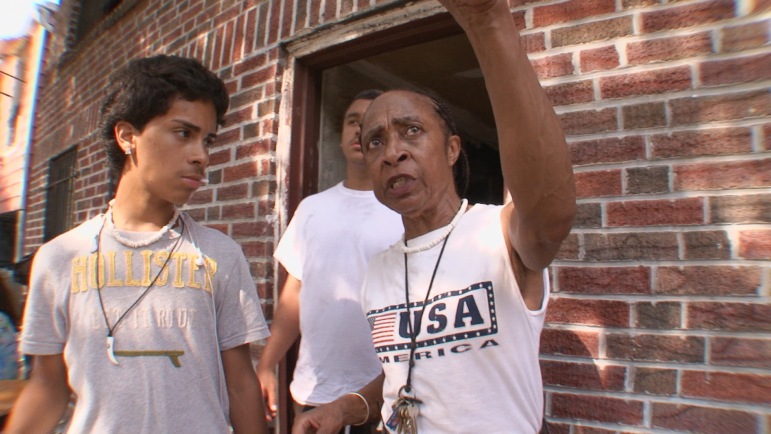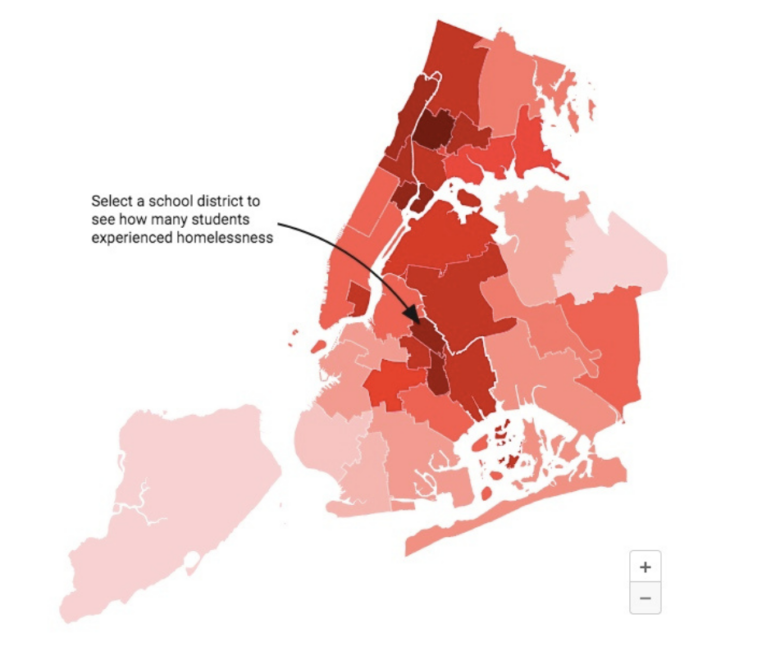
Decade of Fire
The late Hetty Fox, at work in the Bronx.The old saying, often mangled, is that “those who cannot remember the past are condemned to repeat it.”
But what of the rest of us? What are those who know history, and remember it, supposed to do with that knowledge?
Vivian Vázquez Irizarry remembers the history of the South Bronx, where she was born and grew up. She remembers the strong and supportive communities that existed before the bad years, and she remembers the fires. She has studied the backstory that fueled those flames—redlining, White fight, the consultant-driven withdrawal of urban fire protection. Perhaps most important, she remembers what happened after the blazes: the rebuilding of the borough’s human fiber and physical shape thanks largely to working-class people who gathered together and fought for their place in the city. “We were the ones who saved the Bronx when no one else cared,” is how she sums up the story.
Along with Gretchen Hildebran and producers Julia Steele Allen, and Neyda Martinez, Vázquez Irizarry last year produced the film “Decade of Fire,” which revealed that history.
The Bronx had a uniquely dramatic experience, but similar narratives traced their arcs in many cities around the county in the 60s and 70s. And now, in many of those places, a different challenge presents itself: disinvestment and abandonment have been replaced by aggressive development and the threat of displacement. It’s the urban side of the larger national housing crisis, which is erupting into view everywhere from New Hampshire homeless shelters to Colorado manufactured-home parks, and has attracted the attention of most Democratic presidential candidates.
If the presidency shifts parties major housing-policy changes could come in 2021. But chances are, low-income communities are still going to have to fight for their interests and their places.
In a new short film called “Defending Your Block: How to Stay, Fight and Build,” Vázquez Irizarry and her team extract lessons from the experiences of community advocates in the Bronx, Pittsburgh and Los Angeles to inform those efforts at survival.
“Today we’re still fighting a housing crisis in the Bronx and across the country,” Vázquez Irizarry says in the film. “Every neighborhood is different but what we have in common is our determination to stay, fight and build.”
The film, being released Thursday exclusively on City Limits, focuses first on Hetty Fox, a legendary champion for Lyman Place in the Morrisania neighborhood of the Bronx who began working in 1970 to save it from eradication by the flight of capital and the invasion of violence.
William Geist captured some of her spirit in a 1984 New York Times profile: “She said she spent a good deal of time on her second-story porch watching over the block. She walked the street at 2 A.M. to show a presence. She was mugged by a purse- snatcher who slugged her twice in the face but could not wrestle her purse away. She went home, put on her sneakers and went out after him.”
Fox, who died last year and to whom the film is dedicated, called this work “block defense.” She explained it simply in the movie: “You take responsibility for any misbehavior on your block.”
“I used to sleep with my boots on,” she said. “I had to be ready to jump up and run, jump up and fight, jump up and do whatever had to be done on a moment’s notice.”
It was about building as much as it was about fighting. Fox took over an abandoned building and made it into a community center. She built relationships by saying hello to people, approaching strangers, organizing block parties.
To Vázquez Irizarry, Fox’s success at protecting Lyman Place identifies four critical elements for looking to defend their place on the third planet from the sun: Vigilance. Engage with neighbors. Lead with a shared vision. Occupy space.
The same elements are in the story told by Ronell Guy, who helped organize tenants in a Pittsburgh housing development who were facing eviction in the late 1990s. After learning she’d be evicted with only 30 days notice from a Section 8 home, Guy rallied her neighbors–“We called the press. We did everything we could to draw attention.”–and, with the help of Legal Aid, got the eviction overturned.
But Guy understood that the victory was temporary. “We decided that we are never going to go through this again. We decided we’re going to take the property,” from the landlord who had tried to force her and her neighbors out. After learning that the city was about to forgive a huge note to the property owner, Guy and her allies convinced the city to instead move the properties toward tenant control.
Guy, whose organization became the Northside Coalition for Fair Housing, advises counterparts in other cities that “whenever sales occur, that’s your opportunity” to change the destiny of the properties that make up neighborhoods. But she also notes the importance of building the kind of community support that gives organizations the standing to get governments to listen to them. In Northside’s case, that involved a toolkit that would have been familiar to any old-time ward heeler, like diaper giveaways and cooking people dinner.
That sort of moment-to-moment, apartment-by-apartment approach to making change is the kind of thing history books will never capture. Like any successful grassroots movement, neighborhood organizing involves occasional instances of high drama surrounded by weeks and months of plodding work.
It’s that kind of effort viewers see in the story of the East LA Community Corporation (ELACC), an organization founded in the Boyle Heights neighborhood in 1995 to stop a scheme to redevelop the area around a planned transit hub in a manner that would have displaced the area’s people and culture. ELACC organizer Carla de Paz stressed the importance—and the labor intensity—of tracking lot by lot what parcels were changing hands, and which development plans were being hatched, so that ELACC could fight for its vision of developing the land itself.
Finally, “It was really hard for Metro to push back on us,” de Paz said, referring to the transit agency leading the development. “They saw the power that had been built.” Since 1998, ELACC has developed 731 units affordable housing.
The film notes Fox’s passing as well as the deaths of Jerome Avenue-area advocate Carmen Vega-Rivera and pioneering South Bronx activist Al Quinones, all in 2019. Vega-Rivera was a key figure in the resistance to the rezoning—an effort that failed. Not all community led efforts result in wins. And no win is ever permanent. But one lesson the film delivers, without saying so, is that the battle to save neighborhoods can actually create communities.
“I knew that success was to keep the houses here, and keep the people here and interested in staying here,” Fox told the filmmakers. “I knew I had to create something that fascinated people: Look inside, internally, and see what we can do together.”










3 thoughts on “Film Offers Instruction on Self-Defense Against Urban Displacement”
Great follow up to Decade of Fire film. The continuing fight! Marnie
I was a firefighter for 20 years in the South Bronx I loved the neighborhood and the people that lived there. At the time we were the busiest fire units in the city and perhaps the world. A firehouse becomes our second home we become a member of the community my station was located on Boston Rd. and 169th St. prior to that, we were stationed on Intervale Ave. and 169th St. I’m not here to debate who’s the fault it was there enough to go around, but having said that. I believe the city played a major part by turning its back on the needs of the people when it was needed most. It’s been thirty-plus years since my retirement yet I still visit and walk the streets of what was once devastation. Today the sounds of the streets echo a new revival a new spirit. Vivian Vázquez Irizarry represents the new pioneer in community organizing that benefits all concerned hard work and persistence pays off.
Thank you I just learned a lot about the community I live in. We need more people like Hetty Fox. I would love to become a part of the support you need if that mean being a voice, etc. please contact me at irisjsanders65@gmail.com Thank you